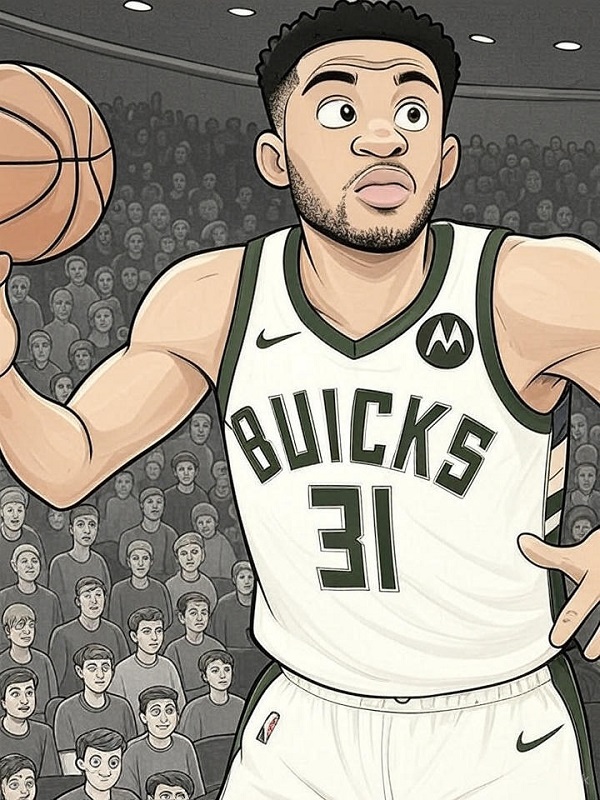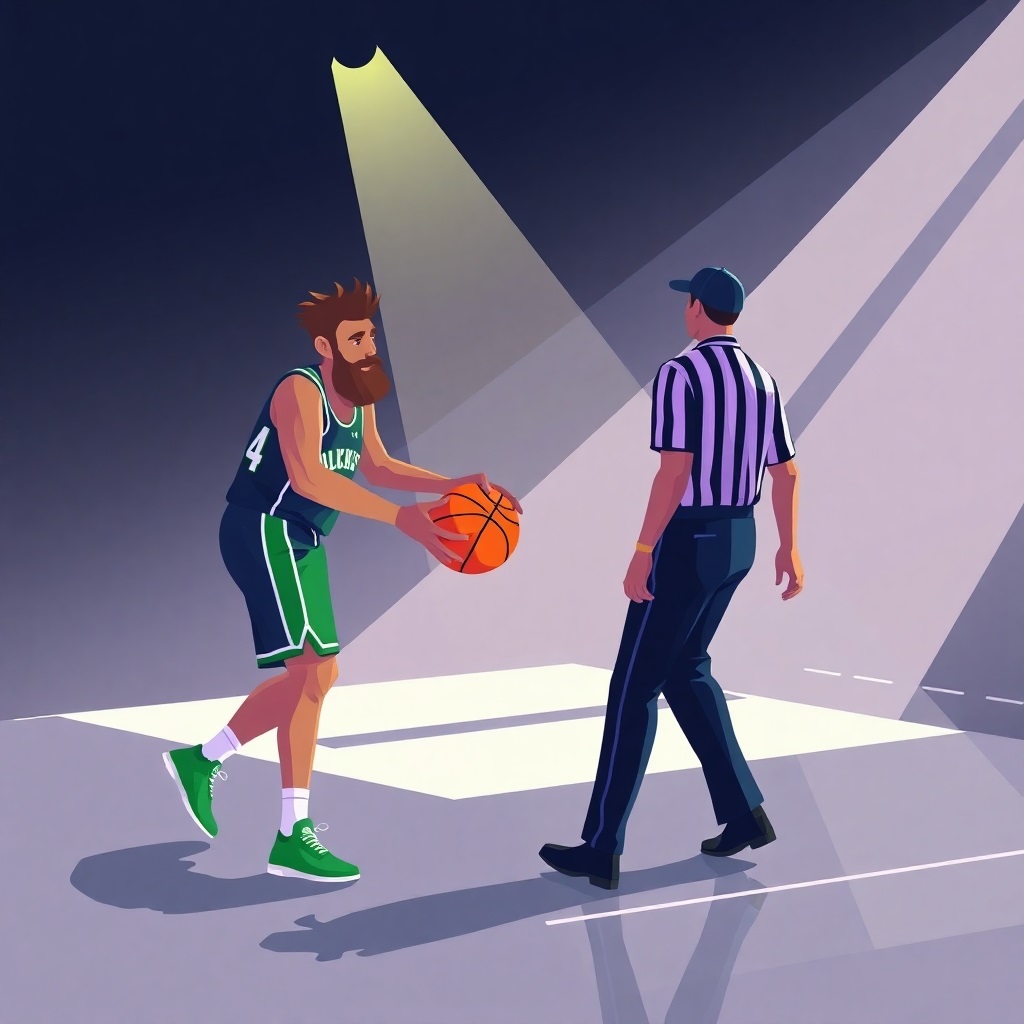In the pantheon of NBA superstars, Giannis Antetokounmpo stands as a freakish force of nature—a 6’11” freight train with the ball, capable of posterizing defenders and anchoring elite defenses. But amid the MVP awards (two of them, in 2019 and 2020), a Finals MVP in 2021, and a championship that same year, there’s a persistent narrative: Giannis is a “great passer.” Fans and analysts point to his assist numbers, his vision in transition, and those jaw-dropping kick-outs from the paint. Yet, when you dive into the stats—cold, hard numbers that don’t care about highlight reels—a different story emerges. Giannis isn’t a good passer. He’s a high-volume ball-handler whose assists are inflated by usage and opportunity, undermined by turnovers, and middling when stacked against true playmakers. Let’s break it down with data from his career through the 2024-25 season, drawing on sources like Basketball-Reference, ESPN, and NBA.com.
The Raw Numbers: Assists That Don’t Impress
At first glance, Giannis’s assist totals look solid. Over 12 NBA seasons (through 2024-25), he’s averaged 5.0 assists per game (APG) in 859 regular-season games. That’s climbed to 6.5 APG in his last two seasons (2023-24 and 2024-25), with 433 total assists in 2024-25 alone across 67 games. But context matters. Giannis leads the league in usage rate year after year—peaking at 34.1% in 2018-19—meaning he touches the ball more than almost anyone. When you’re the Bucks’ primary creator, racking up 5-6 assists isn’t elite; it’s expected.
Compare that to actual assist leaders. In 2024-25, Trae Young topped the NBA with 11.6 APG in 76 games, followed by Nikola Jokić at 10.7 APG. Giannis? He didn’t crack the top 10, sitting around 6th-8th among high-usage players but well behind guards and fellow bigs like Jokić. Even in April 2025, when he averaged a blistering 12.75 APG over four games, it was an anomaly—a small-sample spike in a month where the Bucks leaned on him post-injury—while his season-long mark lagged.
Here’s a quick table of NBA APG leaders for 2024-25 (minimum 57.4 games played per 82-team pace):
| Rank | Player | Team | APG |
|---|---|---|---|
| 1 | Trae Young | ATL | 11.6 |
| 2 | Nikola Jokić | DEN | 10.7 |
| 3 | LeBron James | LAL | 9.1 |
| 4 | Cade Cunningham | DET | 9.0 |
| 5 | James Harden | LAC | 8.9 |
| … | Giannis Antetokounmpo | MIL | 6.5 |
Giannis’s career APG trajectory tells the tale: It jumped from 1.9 as a rookie (2013-14) to 5.9 in his 2018-19 MVP year, but it hasn’t budged much since—hovering at 5.7-6.5 APG from 2022-25. For a guy billed as a “point-forward,” that’s pedestrian. LeBron James, at age 40 in 2024-25, still averaged 9.1 APG while sharing ball-handling duties.
Advanced Metrics: Assist% Sounds Good, But…
Dig deeper into assist percentage (AST%), which measures the percentage of teammates’ field goals assisted while the player is on the floor. Giannis’s career AST% is around 28-30% in recent years, peaking at 36.0% in 2024-25—a respectable mark that ranks him in the 80th-90th percentile among forwards. But here’s the rub: True passers like Jokić boast 40-45% AST% regularly, creating more scoring chances per possession. Giannis’s AST% spiked in 2019-20 (34.2%) thanks to Milwaukee’s improved spacing, but it dipped to 28.7% in the 2020-21 title year when defenses keyed on him.
Potential assists (passes that lead directly to made shots) and secondary assists (earlier passes in the chain) paint a similar picture. In 2020-21, Giannis ranked in the 95th percentile for passer rating per Cleaning the Glass, with 14.9% of his passes turning into assists—better than Stephen Curry’s 11.8% that year. Sounds elite, right? Not quite. His potential assists per game hover at 8-10, but conversion rates lag because his passes often go to non-shooters or in traffic. In 2021-22, the Bucks led the league in assist-to-pass percentage at 9.2% (up to 9.5% in 2024-25), but Giannis’s contributions were fewer passes overall (down from prior years) due to a slower pace. Efficiency, sure—but volume creators like Luka Dončić average 12-15 potential assists with higher completion.
Playoff pressure exposes this further. In the 2024-25 postseason, Giannis averaged 6.6 APG but with an AST% of just 35.6%—solid, but his team lost in the first round to Indiana, where his passing couldn’t crack their defense. Over his playoff career, his APG drops to 5.4, with notable clunkers like 4.9 APG in the 2018-19 semis.
The Turnover Trap: All Vision, No Precision
If assists measure creation, turnovers measure destruction—and Giannis is a turnover machine. His career turnover percentage (TOV%) is 14.5%, meaning nearly 1 in 7 possessions ends in a giveaway. In 2024-25, he averaged 3.1 turnovers per game (TOVPG)—the highest among top-10 usage players. That’s more than double Jokić’s 1.6 TOVPG or Young’s 3.6 APG edge despite similar volume.
His assist-to-turnover (A/TO) ratio? A middling 1.9:1 career mark, dipping to 1.7:1 in 2024-25. Elite passers hit 3:1 or higher; even LeBron’s at 2.5:1 in 2024-25. Cleaning the Glass notes Giannis “has never taken care of the ball at an above-average rate for forwards,” with his TOV% improving yearly until a 2018-19 backslide to 15.2%. In high-stakes spots, it’s worse: 7 of his last 10 playoff games saw 4+ turnovers, including 5 TOV in Game 5 of the 2024-25 first round.
Why so turnover-prone? Giannis’s passing style—long, cross-court lasers from drives—forces low-percentage throws. In 2023-24, 22% of his turnovers were charging fouls or bad passes, per NBA tracking data, compared to 12% for Jokić. His AST:Usage ratio (assists per usage rate) peaked at 0.88 in 2018-19 but sits at 0.75 now—below average for creators.
Not Even Close to the Greats: Sengun is right
Giannis has 4,287 career assists through 2024-25, ranking him tied for 20th among active players but outside the top 100 all-time. For reference, LeBron has 11,000+ at the same age. Among MVP winners, Giannis’s 5.0 APG career trails Jokić (7.2), Russell Westbrook (8.2), and even Derrick Rose (4.2, but with better A/TO).
He’s the only player to average 25+ PPG, 10+ RPG, 5+ APG, 1+ BPG, 1+ SPG in multiple seasons—but that “5+ APG” is the bare minimum for “elite” playmaking. Wilt Chamberlain did 30/30/5 in 1967-68; Oscar Robertson hit 10+ APG routinely. Giannis? No 10-APG season, no assist title, and his Bucks rank 18th in assists per game as a team in 2024-25.
The Eye Test and the Bottom Line
Stats aside, watch Giannis: His passes are reactive—kicks from collapses or lobs in transition—not proactive reads like Jokić’s pocket passes or Young’s pick-and-roll wizardry. In 2024-25, 65% of his assists came off drives (per NBA.com tracking), but only 28% led to threes, vs. 45% for elite passers. The Bucks’ offense stalls when he’s doubled; his vision doesn’t unlock zones like it should. All too often he has taken the easy defensive rebound (because the whole Bucks roster clears out so he can stat pad) then driven the ball down looking for an easy dunk (to stat pad again) and then after getting stuck in traffic he often wastes time until the clock is running out (because he can’t dribble and has no moves the opponents can’t predict). Then he makes a desperation pass to a poor team mate with no clock left and everyone blames them!
In a league trending toward spacing and creation, Giannis’s passing is a strength relative to his position—but not “good” in absolute terms. It’s serviceable, inflated by volume, and crippled by sloppiness. With 3.1 TOVPG and sub-7 APG in his prime, he’s no playmaking savant. He’s a scorer who rebounds and occasionally finds outlets. Time to retire the “point-Giannis” hype. He can’t screen either. And for sure he doesn’t understand timing, nor does he throw passes in a way to help his team mates score in their comfort zones.
Most of all – as usual – Giannis fans are missing the important point. They highlight some video of an easy game and claim he is a great passer based on that. (Like they do for his 3pt….) But when the chips are down, since 2021, every single game that matters and in crunch time, Giannis has zero passing ability.
Data sourced from Basketball-Reference, ESPN, NBA.com, and Cleaning the Glass as of September 2025.





